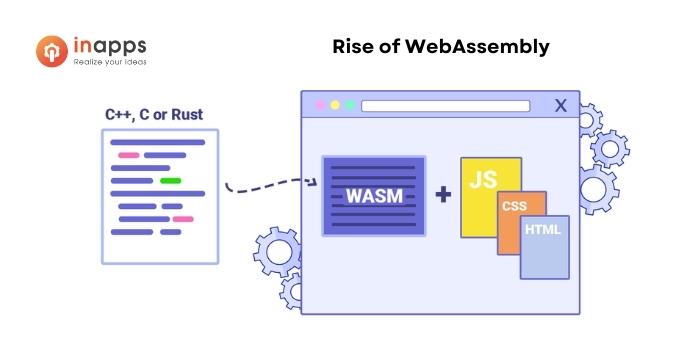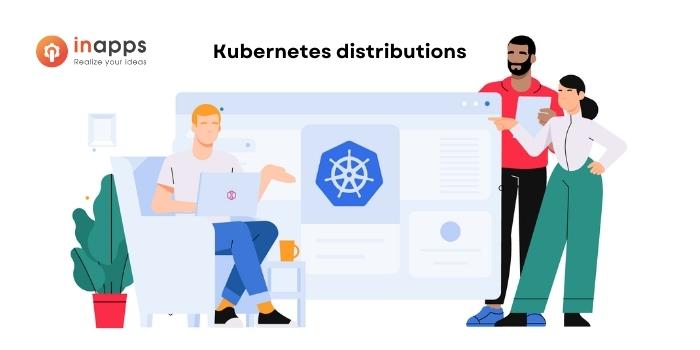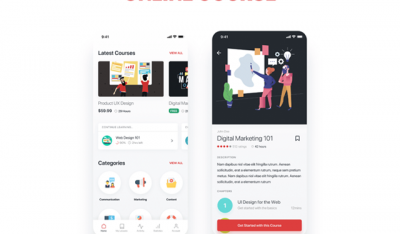- Home
- >
- DevOps News
- >
- 5 Cloud Native Trends to watch out for in 2025
As we transition into 2022, here are five key cloud native trends to consider.
During the last couple of years, the industry has witnessed an exponential rise in the adoption of cloud native technologies. Application modernization led by containers and Kubernetes became a consistent theme for many enterprises. CI/CD based on containers is the de facto DevOps standard for startups and enterprises.
Kubernetes is the preferred platform for running workloads at the edge. It has also transformed into a hybrid computing platform enabling public cloud providers to run their managed services in clusters deployed in on-prem environments.
Key Summary
- Overview: The article by InApps Technology highlights five key cloud-native trends shaping the future of software development and IT operations, emphasizing their role in enhancing scalability, resilience, and innovation. It underscores Vietnam’s growing prominence as a hub for cloud-native development, offering cost-effective, high-quality solutions.
- What are Cloud-Native Trends?:
- Definition: Cloud-native trends refer to evolving practices, tools, and architectures that leverage cloud computing principles (e.g., microservices, containers, Kubernetes) to build and deploy scalable, resilient applications.
- Purpose: These trends aim to optimize resource utilization, accelerate development cycles, and improve system reliability in cloud environments.
- Context: As businesses increasingly adopt cloud-native technologies, staying updated on trends ensures competitiveness in 2022 and beyond.
- 5 Cloud-Native Trends to Watch Out For:
- 1. Serverless Computing Expansion:
- Trend: Serverless architectures, where cloud providers manage infrastructure (e.g., AWS Lambda, Azure Functions), are gaining traction for event-driven applications.
- Details: Developers focus on code, while providers handle scaling, patching, and resource allocation. Ideal for microservices and APIs.
- Impact: Reduces operational overhead, lowers costs by up to 50% for sporadic workloads, and speeds up deployment.
- Example: A fintech app uses AWS Lambda for real-time transaction processing, cutting infrastructure costs by 30%.
- 2. GitOps for Streamlined DevOps:
- Trend: GitOps, using Git as the single source of truth for infrastructure and application deployments, is becoming a standard for managing cloud-native systems.
- Details: Tools like ArgoCD and Flux automate deployments via Git pull requests, ensuring consistency and auditability across Kubernetes clusters.
- Impact: Improves deployment reliability, reduces manual errors, and enhances CI/CD efficiency.
- Example: An e-commerce platform uses ArgoCD to deploy updates, reducing rollback time by 40%.
- 3. AI-Driven Cloud Operations (AIOps):
- Trend: AIOps integrates AI and machine learning into cloud operations for predictive analytics, anomaly detection, and automated incident response.
- Details: Tools like Dynatrace and Splunk leverage AI to monitor performance, optimize resources, and predict failures in cloud-native environments.
- Impact: Decreases downtime by 25%, optimizes costs, and improves system resilience.
- Example: A SaaS provider uses Dynatrace to predict server overloads, preventing outages during peak usage.
- 4. Multi-Cloud and Hybrid Cloud Adoption:
- Trend: Organizations are adopting multi-cloud (using multiple providers) and hybrid cloud (combining on-premises and cloud) strategies for flexibility and resilience.
- Details: Kubernetes and tools like Anthos enable portable workloads across AWS, Azure, and on-premises environments, avoiding vendor lock-in.
- Impact: Enhances redundancy, optimizes costs, and supports compliance with regional data laws.
- Example: A healthcare firm uses Anthos to run HIPAA-compliant apps across Azure and on-premises servers.
- 5. Enhanced Cloud-Native Security:
- Trend: Security is evolving with zero-trust architectures, service meshes (e.g., Istio), and automated compliance checks for cloud-native systems.
- Details: Tools like Aqua Security and Sysdig provide container scanning, runtime protection, and policy enforcement. Focus on securing microservices and APIs.
- Impact: Reduces vulnerabilities by 30%, ensures GDPR/SOC 2 compliance, and builds trust.
- Example: A retail app uses Istio to enforce zero-trust policies, preventing unauthorized API access.
- 1. Serverless Computing Expansion:
- Benefits of These Trends:
- Scalability: Serverless and multi-cloud architectures handle dynamic workloads efficiently.
- Efficiency: GitOps and AIOps streamline operations and reduce manual effort.
- Resilience: Enhanced security and AIOps minimize downtime and risks.
- Cost Savings: Offshore cloud-native development in Vietnam ($20–$50/hour via InApps) saves 20–40% vs. U.S./EU rates ($80–$150/hour).
- Innovation: Trends enable rapid adoption of cutting-edge technologies like AI and serverless.
- Challenges:
- Complexity: Managing multi-cloud or GitOps requires advanced expertise.
- Skill Gaps: Teams may need training in tools like Kubernetes, Istio, or AIOps platforms.
- Security Risks: Misconfigured cloud-native systems can expose vulnerabilities.
- Cost Management: Serverless and multi-cloud can lead to unexpected expenses if not monitored.
- Security Considerations:
- Encryption: Use TLS for data in transit and AES for stored data in cloud-native apps.
- Access Control: Implement RBAC and zero-trust policies with tools like Istio.
- Compliance: Automate audits with Sysdig for SOC 2, HIPAA, or GDPR adherence.
- Example: InApps secures a client’s Kubernetes cluster with Aqua Security and encrypted APIs.
- Use Cases:
- E-commerce: Serverless for scalable APIs and GitOps for rapid deployments.
- Fintech: AIOps for transaction monitoring and multi-cloud for redundancy.
- Healthcare: Secure, compliant apps with zero-trust and hybrid cloud.
- SaaS: Serverless and AIOps for cost-efficient, reliable platforms.
- IoT: Multi-cloud and edge computing for real-time device management.
- InApps Technology’s Role:
- Leading HCMC-based provider with 500+ experts in cloud-native development, Kubernetes, DevOps, and AI integration.
- Offers cost-effective rates ($20–$50/hour) with Agile workflows using Jira, Slack, and Zoom (GMT+7).
- Supports cloud-native projects, including serverless apps, GitOps pipelines, AIOps setups, and secure multi-cloud architectures.
- Example: InApps implements a serverless e-commerce API with AWS Lambda for a U.S. client, improving scalability by 35%.
- Recommendations:
- Adopt serverless and GitOps to streamline development and deployments.
- Leverage AIOps for proactive monitoring and cost optimization.
- Use multi-cloud strategies with Kubernetes to avoid vendor lock-in.
- Partner with InApps Technology for cost-effective cloud-native solutions, leveraging Vietnam’s talent pool to drive innovation.
Trend 1: Rise of WebAssembly in the Cloud Native Environment
WebAssembly has evolved into a high-performance, cross-platform, and polyglot software sandbox environment for cloud native software components. Given the uncanny resemblance between container runtimes and WebAssembly (WASM), Kubernetes can be used for orchestrating the WASM components.
The projects such as WasmCloud, WasmEdge, KubeEdge, and Krustlet made WASM a first-class citizen of the cloud native universe. It is possible to run software packaged as WebAssembly alongside containerized software. Kubernetes can seamlessly orchestrate both workloads from a single control plane.
Startups including SecondState, Cosmonic, and Suborbital are building the platform and tools that will accelerate the adoption of WASM.
Expect to see the rise of cloud native WASM in 2022.

Trend 2: New Distributions of Kubernetes
Though the cloud native ecosystem is flooded with various Kubernetes distributions, we may see new entrants in this space.
Kubernetes is available in three flavors — open source, commercial, and managed.
The open-source distributions include the plain vanilla, upstream Kubernetes, Amazon EKS-D, K3s, and RKE2. Commercial distributions include Red Hat OpenShift, VMware Tanzu, Rafay, Mirantis Kubernetes Engine, and D2iQ Kubernetes Platform.
The public vendors predominantly drive the managed Kubernetes offerings. Offerings such as Amazon Elastic Kubernetes Service, Azure Kubernetes Service, Google Kubernetes Engine, IBM Kubernetes Service, Oracle Container Engine for Kubernetes, and Platform9 Managed Kubernetes are examples of managed Kubernetes distributions. These distributions are not available to customers directly but only through the managed environments operated and managed by the providers.
In 2022, I expect Google and Microsoft to announce open-source Kubernetes distributions based on their managed offerings — GKE and AKS. These distributions will be positioned as production-grade Kubernetes environments delivering the same capabilities as the managed services. Customers adopting these distributions will be able to switch to cloud-based or hybrid managed services easily. It helps them position their offerings as alternatives to EKS-D and EKS-A from AWS.
Apart from managed providers, we may see purpose-built, optimized Kubernetes distributions targeting IoT, edge, and AI workloads.

Trend 3: Increased Focus on Cloud Native Security
With the emphasis on cybersecurity, I expect to see open source projects and commercial offerings squarely focused on cloud native security.
Two areas will get the attention — software supply chain and eBPF.
The software supply chain closely mimics the supply chain of real-world commerce where resources are consumed, then transformed, through a series of steps and processes, and finally supplied to the customer. Modern software development is about assembling and integrating various components available in the public domain as open source projects. In the complex supply chain of software, a compromised piece of software can cause severe damage to multiple deployments.
Recent incidents involving CodeCov, Solarwinds, Kaseya, and the ua-parser-js NPM package highlight the need to secure the software supply chain.
In 2022, there will be new initiatives, projects, and even new startups focusing on secure software supply chain management.
The other exciting trend is eBPF that enables cloud native developers to build secure networking, service mesh, and observability components.
We have seen Isovalent bringing eBPF to container-native networking through Cilium, Pixie (acquired by New Relic) leveraging it to build an observability stack, Falco and Tracee using eBPF to monitor and raise security events and alerts, and the introduction of sidecar-less proxy for service mesh.
Expect to see eBPF becoming the foundation of cloud native security and networking.

Trend 4: Kubevirt Going Mainstream
Kubevirt is an open source project that enables Kubernetes to orchestrate virtual machines like containers. By running VMs and containers side-by-side, customers can easily integrate legacy workloads with modern microservices-based applications. They also benefit from the simplified DevOps workflows for managing both workloads.
Kubevirt is already an integral part of Red Hat OpenShift Virtualization, Rancher’s Harvester, Platform9 Managed Kubernetes, and Google Anthos.
In 2022, we will see a dramatic rise in the adoption and integration of Kubevirt with Kubernetes, where VMs are treated as first-class citizens.
Trend 5: GitOps Becomes the Standard for Continuous Deployment
GitOps brings the familiar Git-based workflow to release management of cloud native workloads. The reconciliation of state by treating Git as the single source of truth combined with the ability to rapidly roll back makes GitOps a powerful mechanism.
Weaveworks‘ Flux CD, ArgoCD, Google Anthos Config Management, and Rancher Fleet are some of the available choices for implementing GitOps.
In 2022, GitOps will evolve to support multitenancy and multicluster deployments making it easy to manage tens of thousands of Kubernetes clusters running at the edge or in hybrid environments.
GitOps will become the gold standard for continuous deployment.
We hope this tutorial has helped you in learning more about Cloud Native trends. In case of any queries, you can contact InApps. We would love to help you.
[sociallocker id=”2721″]
List of Keywords users find our article on Google
| tracee ebpf |
| cloud native trends |
| native trends |
| “solarwinds” +”industry” -site:facebook.com -site:youtube.com -site:twitter.com |
| mirantis kubernetes engine dr |
| cloud native 2022 |
| managed openshift |
| amazon eks |
| vms fleet management |
| red hat openshift container platform pricing |
| kubernetes trends |
| pixie kubernetes |
| harvester kubernetes |
| mirantis.com |
| rke2 |
| kaseya vs |
| solarwinds kubernetes monitoring |
| kubernetes adoption trends |
| cloud container engine |
| new relic alternatives |
| “kubernetes platform” |
| github kubeedge |
| anthos service mesh |
| red hat openshift sandbox |
| falco developers |
| solarwinds virtualization manager |
| vmware tanzu vs openshift |
| container engine for kubernetes |
| kubeedge |
| npm trends |
| mirantis jobs |
| solarwinds npm alternative |
| mirantis logo |
| kaseya jobs |
| cloud run for anthos |
| solarwinds npm reviews |
| openshift observability |
| red hat openshift container engine |
| anthos config management |
| red hat openshift developer sandbox |
| openshift oracle cloud |
| openshift service mesh |
| what is red hat openshift container platform |
| codecov api |
| red hat openshift alternatives |
| openshift cicd |
| red hat openshift managed services |
| solarwinds npm |
| ebpf service mesh |
| pixie ebpf |
| wasm k8s |
| tanzu vs rancher |
| kubevirt |
| “cloud native security” |
| pixie observability |
| kubevirt github |
| kaseya linkedin |
| tracee vs falco |
| npm tends |
| sidecarless service mesh |
| github falco |
| azure kubernetes service dr |
| red hat openshift alerts |
| anthos clusters |
| npm highlight js |
| vmware tanzu observability |
| kaseya alternatives |
| npm highlight.js |
| codecov github |
| cloud-native scm |
| red hat openshift service mesh |
| trend cloud app security |
| alternative to kaseya |
| argocd logo |
| openshift vs azure |
| solarwinds npm review |
| argocd openshift |
| google application engine observability |
| the harvester github |
| kaseya review |
| rke2 architecture |
| what is openshift dedicated |
| mirantis kubernetes engine |
| newrelic js |
| sandbox openshift |
| solarwinds security event manager pros and cons |
| cilium alerts |
| mirantis cloud |
| observability for openshift |
| wasmedge |
| kubernetes adoption and security trends |
| openshift gitops |
| flux github |
| fluxcd |
| gke on prem anthos |
| vmware google anthos |
| argocd icon |
| azure redhat openshift architecture |
| codecov alternatives |
| gke onpremm |
| how is elastic service mesh used in container networking |
| trend + relic |
| vmware hybrid cloud control plane |
| openshift virtualization |
| red hat openshift container platform standard |
| k3s service mesh |
| outward bound cost |
| azure kubernetes service review |
| outward flux |
| redhat openshift kubernetes service |
| solarwinds take control alternatives |
| aks engine |
| components of openshift |
| isovalent |
| webassembly jobs |
| kubernetes trend |
| dr liem bui |
| azure kubernetes service |
| ebpf kubernetes |
| elastic observability |
[/sociallocker]
Let’s create the next big thing together!
Coming together is a beginning. Keeping together is progress. Working together is success.



















